This is fashion that helps the world, sorted
Christmas is in the air in Batley. It’s on the rails, too, and piled high on tables, and in bags and in huge collecting bins on wheels.
Batley is home to Oxfam’s main clothing and recycling plant in the UK. This is where donations from across the country arrive by the lorryload in black plastic bags. These are dropped into a sorting bay and then each bag is placed on the Oxfam Wastesaver podium, a long run of tables, where they are opened, spread out and sifted through with care by Oxfam’s expert treasure-hunting staff. Recently, they found an original Ossie Clark dress. “Absolutely stunning, from the Sixties, and it sold for £650,” says Lorraine Needham-Reid, site manager: production for Oxfam Wastesaver, as she takes me on a tour of the massive plant with its two huge interconnecting warehouses, on Mill Forest Way on the outskirts of Batley.
Advertisement
Hide AdAdvertisement
Hide Ad“We go through between 80 and 90 tonnes a week,” she says. “Here we’ve got six garment sorters. They have been doing it for many years, but they also get trained. There’s a quality assurance manager, who trains them in what to look for. And as you look round you will see there are mood boards. The online shop will say, ‘this is what we’re looking for this season’.”
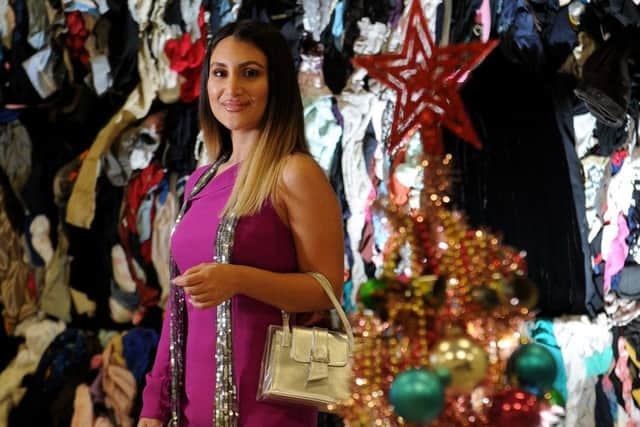

The garment sorters are identifying designer and quality brand pieces for the online operation (which is also at the plant), as well as pulling out clothes and accessories for Oxfam’s pop-up shops at festivals, and for a few Oxfam shops that have more customers than donors. All profits go towards the charity’s work across the world, fighting poverty and helping people hit by disaster in countries from Yemen to the Democratic Republic of the Congo.
“Anything that has been donated to an Oxfam shop but hasn’t sold in two weeks is bagged up and sent to the depot. Or it could be that it’s so raggy and horrible that we wouldn’t put it out, and it will still come here,” Lorraine says.
This includes designer finds and vintage pieces. “There are some shops that won’t necessarily stock vintage finds, because their customers just wouldn’t buy them, so they would go into one of the bags, too,” she says.
Advertisement
Hide AdAdvertisement
Hide AdAs well as volunteers, about 70 paid staff work at the Batley plant, which opened in 2013, two years after a major fire closed the original operation in Huddersfield, which had been there since 1974. Only a small percentage of items reach the online and festival shops. New-looking inexpensive clothing is pulled out to go to Eastern Europe, first to Hungary to be sold on into retail shops. “It has to suit an 18-35 year old,” says Lorraine. “It has to be on-trend. Ideally, it would be brand-new with tags, but it just has to look new. They don’t care what the label is.
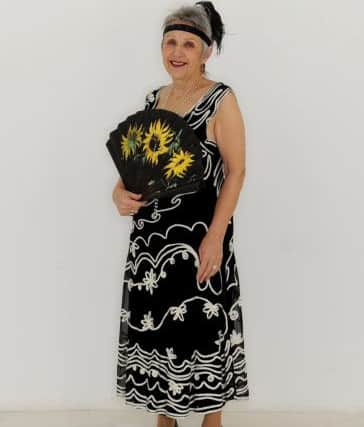

However, the vast majority of recycled wearable clothing goes to Africa, to Frip Ethique, an Oxfam-run social enterprise in Senegal, where workers, mainly women, sort clothes donated at UK Oxfam shops and sell them to local market traders. “We send stock over that is suitable for an African market. They really like bras,” says Lorraine.
But nothing is wasted, no matter how unwearable. Some clothes and fabrics go to make the felt that attaches to the springs in mattresses. What’s left over is sent to the Energy From Waste plant at Ferrybridge, to make electricity.
Our tour finishes at the end of the second warehouse, where the Oxfam Online Shop is located. Here is where a team of paid staff and volunteers sort the special clothing and accessories that have made it through the plant to them. Some the save for the pop-up shops they run at festivals around the country, including four at Glastonbury. “They get wellies and sleeping bags and jumpers,” says Lorraine.
Advertisement
Hide AdAdvertisement
Hide AdQuality and designer pieces are photographed in one of the three small photographic studios at the shop and then uploaded to sell online. Online shop manager Holly Bentley says: “We upload 100 new items a day but any high street shop can upload items. There’s around 200,000 things on there now.” They reach the attention of customers all over the world, as far as Australia, and purchases are shipped out to them by Oxfam.
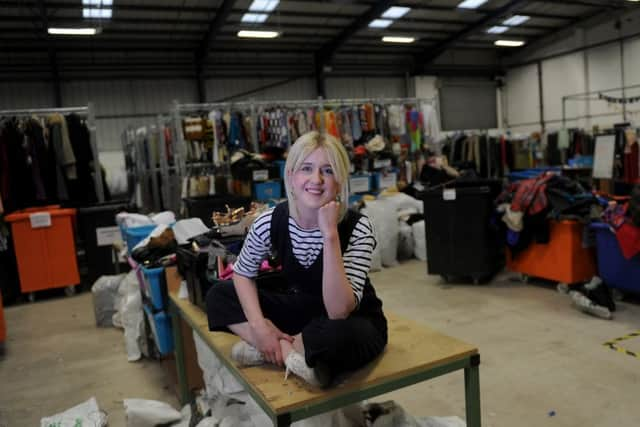

“We’ve had some fantastic designer shoes and we do have two Ossie Clark dresses left,” Holly says.
Six Oxfam Wastesaver staff, including volunteers, turned models here for our festive fashion shoot, to show off the sort of style finds that the online shop sells. Tammi Baxter, deputy online manager, wears a green Versace suit. “It came in a bag, through the system, down the podium and then here to us, and we were all ecstatic, running about,” she says.
Fashion blogger Yalda Yazarlou is a volunteer helping with Oxfam social media, as well as listing clothes for the site. “I love this bag,” she says, holding up a tiny white and clear plastic number. “It’s a Start Weitzman and it’s so cute, because it’s so in at the moment, with the style and the size of it.”
Advertisement
Hide AdAdvertisement
Hide AdEchoe Moyers, a placement student from Huddersfield University, wears pink Dolce & Gabbana trousers. “I list the designer stuff and I’ve got an upcycling project,” she says.
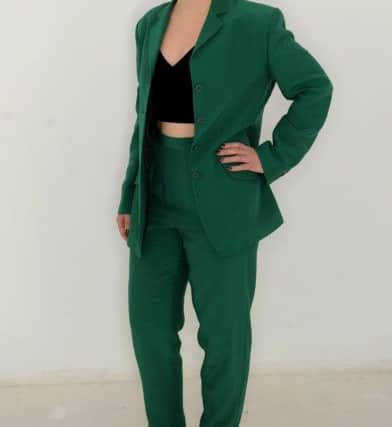

Ben Grimer is fulfilment co-ordinator at the plant, managing the dispatch side. “I’m wearing Prada penny loafers, a Mulberry shirt and an Aquascutum jacket,” he tells me. Finally, Phil Toczek, who has been volunteering for a year, wears a Fat Face shirt, and Linda Hobson, also a volunteer, wears a black Phase Eight dress, along with her own handpainted vintage fan, another Oxfam Wastesaver find.
Their efforts have celebrity backing as this month Kate Moss, Una Healy, Ellie Goulding, Killing Eve star Jodie Comer and designer Stella McCartney show their support for Oxfam’s sustainable fashion campaign by donating their own partywear. It follows research by the charity suggesting that eight million clothes and accessories bought for the Christmas party season this year will be worn only once, leaving them to fester in wardrobes or end up in landfill.
Ellie Goulding, who donated a little black Isabel Marant dress, said: “When you fall out of love with an outfit, let someone else fall in love with it. Source your new look from Oxfam too, and you’re showing maximum respect for clothes, the planet and style.”
Advertisement
Hide AdAdvertisement
Hide AdOxfam Wastesaver helps slow down fast fashion which, Oxfam says, uses speed and low cost production to deliver new clothes which soon end up discarded, with the fashion industry responsible for 92 million tonnes of waste dumped in landfill every year.
On average, we Brits throw away 28 items of clothing a year and have 32 items of clothing that have not been worn for 12 months.
By ensuring that no clothes, whatever their quality, end up in landfill, Oxfam Wastesaver Batley gives beautiful, wearable pieces a second chance as it funds vital work helping the world’s poorest people to access clean water, food and shelter (last year Oxfam helped 5.5 million people get clean water).
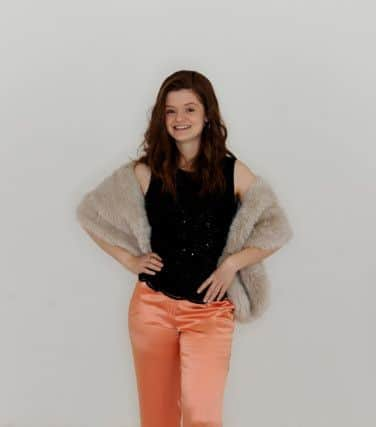

With designer pieces from Versace, Dolce & Gabbana, Mulberry and more just waiting to be snapped up, recycled fashion has never looked so good.
Oxfam’s Online shop is at www.oxfam.org.uk/shop. Twitter and Instagram: @oxfamonlineshop and tag yourself in social media with your new finds using #foundinoxfam